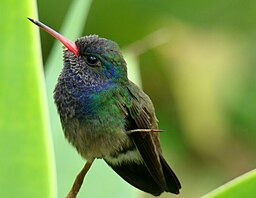
Did you know fossil evidence suggests that sharks first patrolled the world’s seas and oceans some 450 million years ago. That’s more than 200 million years before the dinosaur every set foot on the earth. Today, there are more 500 different species of shark on our planet. These range from the tiny 150 mm long dwarf lantern shark to the whale shark, which can grow up to 18 m in length. Here’s a brief rundown of the world’s five largest sharks:
Whale Shark
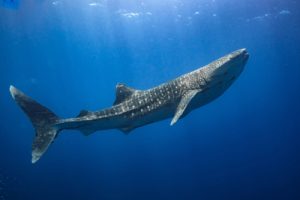
Photo credit: Jason LSL/Shutterstock.com
The whale shark (Rhincodon typus) is the largest of all extant shark species. On average, it grows to a length of about 10 m (33 ft) and some 18 tonnes in weight. However, some individuals have been recorded at more than 18 m (60 ft) in length and are estimated to have weighed over 40 tonnes.
The whale shark inhabits the tropical and warm temperate waters of the world where it feeds on plankton and other small sea creatures. Despite their huge size, whale sharks are not aggressive by nature and pose little threat to humans. The female whale shark can give birth to as many as 300 pups at a time but many of their offspring never make it to maturity.
The whale shark faces an increasing threat of extinction due to human activity, which includes boat strikes and hunting. Consequently, the whale shark is currently classified by the International Union for Conservation of Nature (IUCN) as an endangered species.
Basking Shark

Photo credit: Martin Prochazkacz/Shutterstock.com
The world’s second-largest shark and fish is the basking shark (Cetorhinus Maximus). On average, it grows to a length of about 7.5 m (25 ft) and some 4.5 tonnes in weight. However, some individuals have been recorded at more than 12 m (40 ft) in length and are estimated to have weighed over 16 tonnes.
Along with the whale shark and the megamouth shark, it is one of only three plankton-eaters of the shark family. Like the whale shark, it is a harmless creature that spends most of its time feeding near the sea’s surface. It is a highly migratory species that can be generally found in the world’s arctic and temperate waters close to the shoreline.
Basking sharks are currently listed by the IUCN as an endangered species.
Megamouth Shark
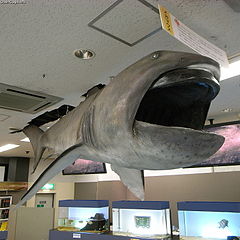
Photo credit: Creative Commons (CC BY-SA 2.5)
The world’s third largest shark, the megamouth shark (Megachasma pelagios) is, along with the whale shark and basking shark, a harmless plankton feeder. It is native to all oceans in the world but is most commonly found in the Pacific Ocean.
The megamouth usually grows to a maximum length of around 5 m (16 ft), weighing in at about 1.25 tonnes. However, scientific studies suggest the species’ absolute maximum length may be 6 m (20 ft).
The megamouth shark, as its name suggests, has an unbelievably massive (circular) mouth. The first sighting of the megamouth was made in 1976, and there have only ever been about 200 recorded sightings since. It is listed by the IUCN as an endangered species.
Great White Shark
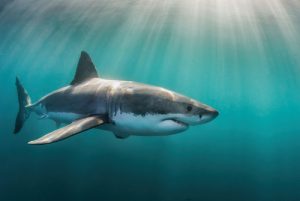
Photo credit: Fiona Ayerst/Shutterstock.com
The world’s fourth largest shark, the great white shark (Carcharodon carcharias), is renowned for being the world’s fiercest and most predatory fish. ‘Great whites’ inhabit the cool coastal waters of the world, where their regular prey includes seals, dolphins, and sea lions.
A ‘great white’ typically grows to a maximum of about 5 m (16 ft) and can weigh more than 1 tonne. However, exceptional individuals can grow up to 6 m (20 ft) long. Globally, the species is responsible for the most shark attacks on humans. However, most of these incidents are non-fatal and thought to be triggered by curiosity rather than malice.
The ‘great white’, like shark many species, is slow to reach reproductive maturity and produces only a small number of young each year. This obviously makes the species highly susceptible to threats from fishing and other human activities. Consequently, great white sharks are currently listed by the IUCN as vulnerable.
Great Hammerhead Shark
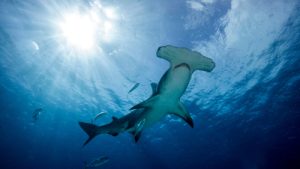
Photo credit: Izen Kai/Shutterstock.com
The great hammerhead shark (Sphyrna mokarran) is largest of all the hammerhead species and the world’s fifth largest shark. Hammerheads can be found in all the tropical and temperate waters of the world, except the Mediterranean.
The species grows to an average length of about 4 m (13 ft) and a weight of about 230 kg. However, the longest great hammerhead shark ever recorded was just over 6 m (20 ft) long, and the heaviest ever recorded, weighed 450 kg.
The hammerhead obviously derives its name from the distinctive shape of its head. However, despite its menacing appearance it is completely harmless to man. The species currently faces a significant threat due to the high value of their fins in the shark fin trade. Consequently, it is currently listed by the IUCN as an endangered species.
Header image credit: Noiel/Shutterstock.com




